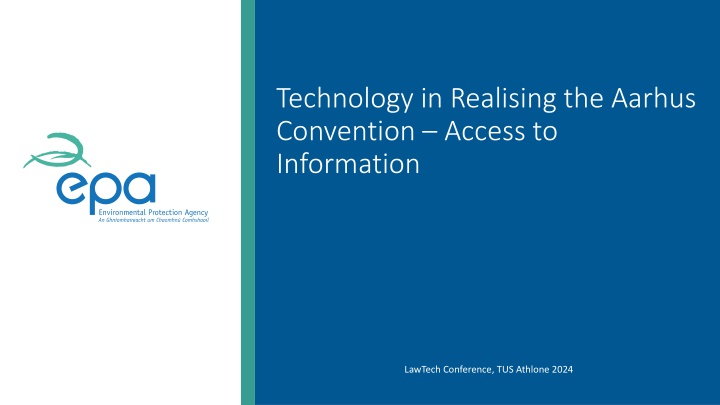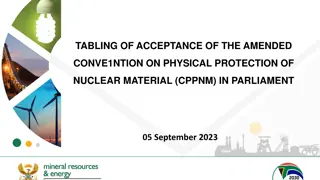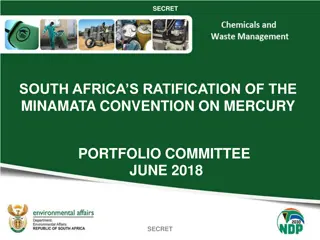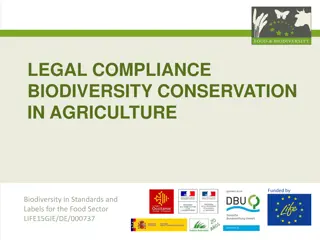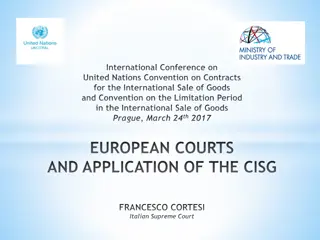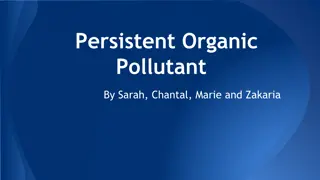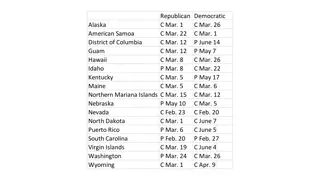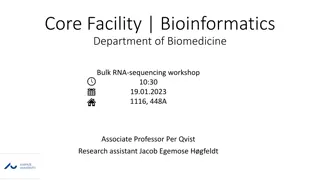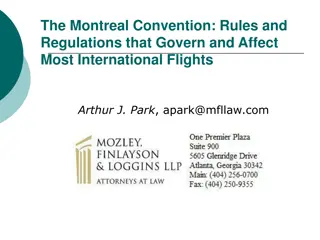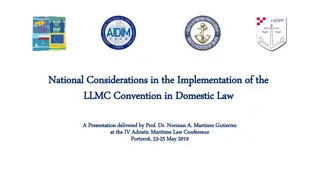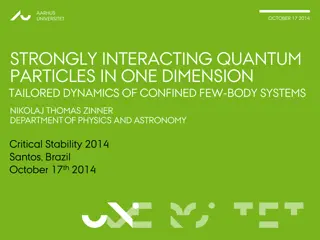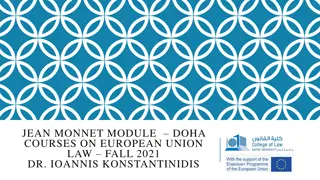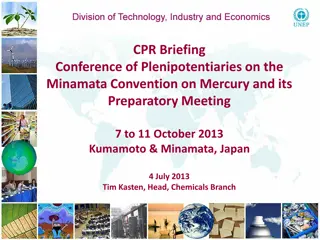Technology in Realising the Aarhus Convention LawTech Conference
This content discusses the role of technology in ensuring public participation obligations under the Aarhus Convention and Industrial Emissions Directive. It highlights the importance of using technology to promote access to environmental information and public participation, focusing on permitting activities related to industrial emissions.
Download Presentation

Please find below an Image/Link to download the presentation.
The content on the website is provided AS IS for your information and personal use only. It may not be sold, licensed, or shared on other websites without obtaining consent from the author.If you encounter any issues during the download, it is possible that the publisher has removed the file from their server.
You are allowed to download the files provided on this website for personal or commercial use, subject to the condition that they are used lawfully. All files are the property of their respective owners.
The content on the website is provided AS IS for your information and personal use only. It may not be sold, licensed, or shared on other websites without obtaining consent from the author.
E N D
Presentation Transcript
Technology in Realising the Aarhus Convention Access to Information LawTech Conference, TUS Athlone 2024
EPAs Role Public participation obligations under Aarhus Convention, Industrial Emissions Directive, inter alia, to ensure public concerned have early and effective opportunities to participate. Large amounts of technical and scientific data How to use technology to promote Access to Information?
Aarhus Convention and related legislation Aarhus Convention Access to Information Access to Public Participation Access to Justice Directive 2003/4/EC of the European Parliament and of the Council on Public Access to Environmental Information European Communities (Access to Information on the Environment) Regulations 2007 to 2018 Public authorities must make available and disseminate environmental information to the general public to the widest extent possible, in particular by using information and communication technologies. Right to access environmental information held by, or for, Public Authorities.
Permitting Industrial Emissions Directive (IED) The EPA s Office of Environmental Sustainability deals with licensing and permitting of industrial activities, many of which fall under the IED. The IED aims to achieve a high level of protection of human health and the environment by reducing harmful industrial emissions across the EU. Types of industries which may require an Industrial Emissions licence include intensive agriculture; food and drink; cement; chemicals; metals; energy; fossil fuels and waste. The licence contains strict conditions on how an activity must operate so as to protect the environment from pollution that might otherwise arise.
Permitting IED and Access to Information Article 24 of the IED provides for access to information and public participation. Member States shall ensure that the public concerned are given early and effective opportunities to participate in the specified procedures inter alia the granting of permit for new installations, granting of a permit for any substantial change. Specified information upon the decision of granting, reconsideration or updating of a permit must be made available, including inter alia thecontent of decision, reasons, how permit conditions have been determined.
Permitting Access to Information https://www.epa.ie/our-services/licensing/licencesearch/ Information available (non-exhaustive): Final determination/ licence and condition details; Third Party Submissions and EPA s response to Submissions; Inspector s Report; Application information (including planning, air dispersion modelling); Correspondence; Requests for further information.
Permitting Access to Information https://www.epa.ie/our-services/licensing/licencesearch/ Searchable by: Name; Register number; Applicant/ licensee name; Facility type/county/status; Applications under assessment and open to submission; Proposed determinations open to objections; Date range.
Revision of IED E-permitting Latest co-legislator agreement would introduce an electronic permitting system aimed to make permitting more efficient and less burdensome . The agreement would introduce an obligation for Member States to establish an electronic permit system (e-permit) by 2035. The details of what such an e-permit system would look like are not yet specified. EPA uses the EDEN Portal for organisations to communicate with EPA and share data IED licence applications happen through this portal.
LEAP Licence and Enforcement Access Portal LEAP provides access to the Formal Compliance and Enforcement Correspondence (FCEC) arising from regulatory interactions between EPA and licensed and permitted operators. Activities: Urban waste water discharge; Industry pharmachemical, power generation, food and drink, cement, minerals; Radiological Protection medical, dental; Waste management landfills, waste transfer; Dumping at Sea.
LEAP Licence and Enforcement Access Portal LEAP provides access to the Formal Compliance and Enforcement Correspondence (FCEC) arising from regulatory interactions between EPA and licensed and permitted operators. Information available (non-exhaustive): EPA Site Visit Reports; Licensee Returns (monitoring reports, site updates); Incidents; Complaints; Non-Compliance Register; Compliance Investigations; Meeting records.
Pollutant Release and Transfer Register (PRTR) The EPA maintains the PRTR database which lists over 400 facilities that engage in environmentally hazardous activities. E-PRTR Regulation, (EC) No 166/2006. Operators (which must have licence, permit or registration for its activities and emissions) submit environmental reports to the EPA annually. Facility operators must assure quality of information, EPA then carries out detailed quality checks on the submitted data before reporting to the European Commission. Information is searchable by year, county, facility name, registration number, sector and activity, as well as an interactive map.
Revision of IED - Industrial Emissions Portal Latest co-legislator agreement of revision of IED would replace E-PRTR with portal for information on industrial emissions. Aims to enhance public access to information related to industrial emissions and facilitate public participation in environmental-decision making. The portal would include data on use of water, energy and key raw material, as well as data on releases of pollutants and off-site transfers of waste. Proposed text (9) Allow for user-friendly, electronic means of extraction of data, including query-based datasets . The Industrial Emissions Portal will be established by its own EU Regulation.
Thank you! licensing@epa.ie
